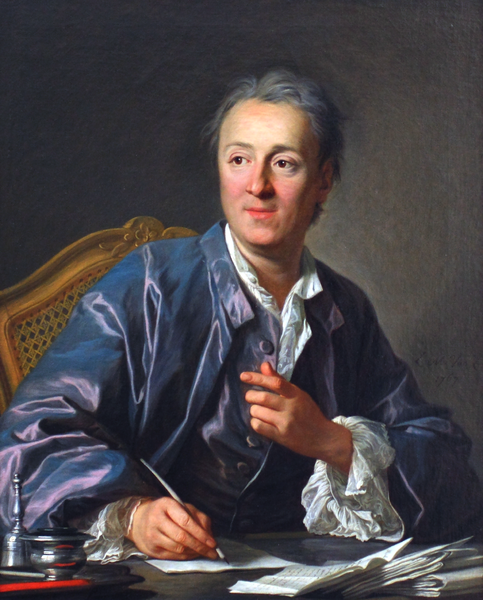Denis Diderot: the last true Baconian?
Peter Anstey writes…
There were many types of Baconianism in the eighteenth century and many philosophers and natural philosophers traced their lineage from Bacon or regarded Bacon as the progenitor of views that they espoused. And yet most of these self-proclaimed ‘Baconians’ held views that Bacon himself would hardly recognize or they adhered to what, at best, could be described as a truncated form of Baconianism. A nice example is George Adams Jr whose views on the method of reasoning in natural philosophy in his Lectures on Natural and Experimental Philosophy (1794) (discussed previously on this blog) amount to little more than a summary of the first book of Bacon’s Novum organum (1620).
What would it take then for someone to be a true Baconian? Of course, the question itself is problematic because there is no principled way of determining the necessary and sufficient conditions that would settle the issue. But let us run with the question nonetheless.
Given the prominence of Bacon’s method of natural history in his conception of how we are to acquire knowledge of nature – that is, given the quality and quantity of writings that he devoted to natural history and the efforts he expended in assembling his own exemplar histories in the last years of his life – I suggest that to be a true Baconian one must (at least) be an advocate of the Baconian method of natural history. If this is right, then as far as I am aware, the last true Baconian was the French philosophe Denis Diderot (1713–1784).

Denis Diderot (1713 - 1784)
Diderot’s ‘Prospectus’ for the Encyclopédie, was first published in 1750 and then appended in a modified form to the ‘Preliminary Discourse’ of the first volume of the Encyclopédie itself in 1751. It presents an overtly Baconian scheme of the sciences set within a tripartite faculty psychology à la Bacon, but more importantly, it shows a clear understanding and acceptance of the structure and content of Bacon’s account of the overall project of natural history. Drawing heavily on Bacon’s De augmentis scientiarum he tells us that:
The history of uniform nature is divided, following its principal objects, into: celestial history or history of the stars, of their movements, sensible appearances, etc., without explaining their cause by systems, hypotheses, etc. (It is a matter here only of pure phenomena.) Into meteorological history such as winds, rains, tempests, thunder, aurora borealis, etc. Into the history of the earth and the sea, or of mountains, rivers, streams, currents, tides, sands, soils, forests, islands, configurations of the earth, continents, etc. Into history of minerals, into history of vegetables, into history of animals. Whence results a history of the elements, of the apparent nature, sensible effects, movements, etc., of fire, air, earth, and water. (Preliminary Discourse, Chicago, 1995, 147)
(Regular readers of this blog will note the decrying of systems and hypotheses as hallmarks of a commitment to the experimental philosophy.)
Yet Diderot does not merely reproduce the structure and content of Bacon’s method of natural history, he also appreciated the heuristic structure of these histories and the fact that they needed to be subject to what Bacon called interpretatio naturae, the interpretation of nature. For, in 1754 Diderot published a work entitled On the Interpretation of Nature which, as many scholars have recognized, is very Baconian in character. It is, in effect, Diderot’s own version of Book Two of Bacon’s Novum organum. To be sure it lacks any extended discussion of Baconian induction and prerogative instances, but it is written in aphoristic form and contains many Baconian themes including advice on experimenting, the use of queries and conjectures and concrete natural philosophical examples. Surely on this evidence Diderot must qualify as a true Baconian. Was he the last?

